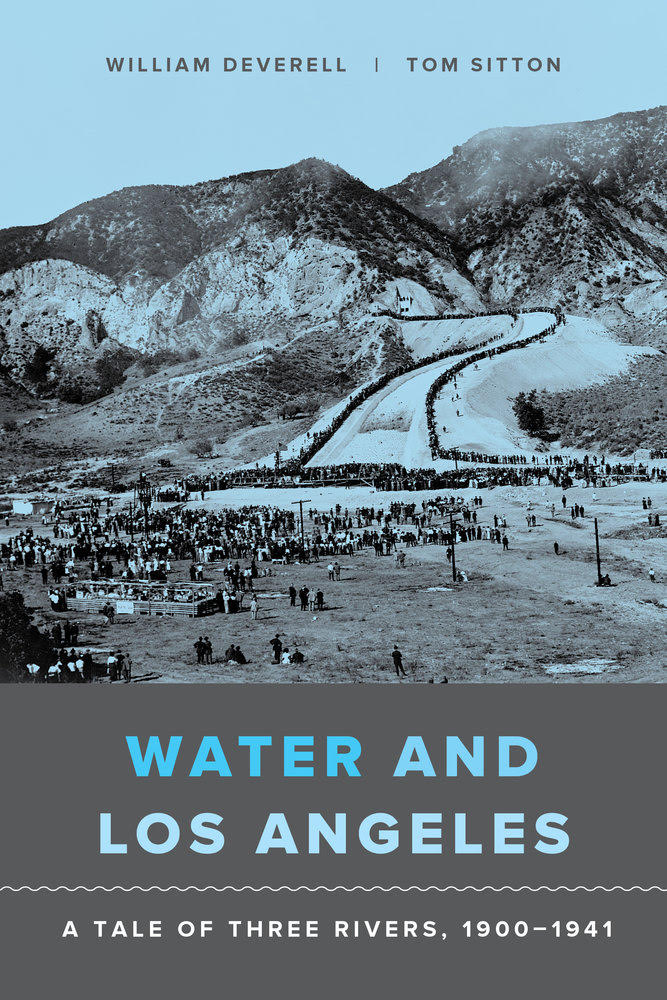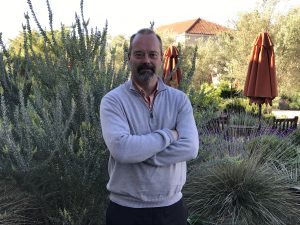The March 2017 issue of Perspectives on History featured a piece by Seth Denbo, the AHA’s director of scholarly communication and digital initiatives, on the trend of open-access monographs in humanities fields. As Denbo wrote, “A small but growing number of presses have started exploring new economic models that require authors or their institutions to help cover the costs of publishing while simultaneously making their work freely accessible online to readers from around the globe.” One of these is the University of California Press, which through its new initiative, Luminos, has begun publishing open-access books in history.
We reached out to William Deverell, director of the Huntington-USC Institute on California and the West, and co-author of an open-access book, Water and Los Angeles: A Tale of Three Rivers, 1900–1941, published under Luminos, to find out what the process of publishing an open-access monograph looks like from an author’s perspective.

William Deverell says that publishing Water and Los Angeles through open access was an “opportunity to democratize access to water history in the far West.” Image courtesy of University of California Press
Q. Were you actively seeking to publish an open-access monograph? If yes, can you tell us why? If not, can you tell us what went into your decision to publish an open-access book?
This project began life as a different idea, with a different publisher. Time passed. The earlier plan grew less feasible, but the University of California Press got wind of it and approached the two of us (Tom Sitton, curator of history at the Natural History Museum of Los Angeles County, is the co-author) with an idea. Once we learned a bit more, the possibility of publishing a “water in California book” through open access grew very attractive to us. The opportunity to democratize access to water history, in the far West, seemed (and still does) like a very good idea, and we are proud to have had things work out the way they did. I’d add, on the part of the two of us, that we entered the process completely naïve about open-access publishing and were motivated more by curiosity than knowledge.
Q. Was the process of publishing your monograph with Luminos different in any way compared to a traditional press?
No, I’d say it was extremely familiar terrain. Do the work, revise it, push it out to peer review, revise it again, move on to the various publishing stages. What I had frankly thought would be mysterious and complicated turned out to be neither.
Q. Do you see any clear advantages or disadvantages to publishing an open-access monograph?
Access beyond traditional publishing pathways, marketing, sales, and inventories: all that is great. Is there a barrier in the shape of up-front author-carried funding? Yes. The amounts are not huge, but I do hope that the academy continues to be supportive of, for instance, junior or non-tenure-track scholars (and others) whose access to research funding that can support open-access publishing is limited in ways that it might not be for more senior faculty at institutions that can provide such support. That seems obvious, but it is a real concern.
Q. Much of the open-access content right now is in the natural and physical sciences. Why is open access a good format for historians and for historical research?
For the same reasons, I’d guess. And for the opportunity to bring first-rate humanities work to wider publics hungry for scholarly insight, analysis, and argument.
Q. What advice would you give to historians exploring publication options for their books? If they’re considering going the open-access route, what questions would you recommend they ask of the press and of themselves?
How much does it cost to do this? Because the press has less skin in the game, will it continue to push the works before diverse and wide audiences in support of exactly that promise of the democratization of knowledge?
Q. What are your plans for your next monograph? Do you anticipate continuing to publish in open-access formats?
I’m in conversation right now with another colleague about doing this again. It was enjoyable, it met our scholarly expectations (and those of my department and university), and I would happily go down this road again. Open access doesn’t mean “no book.” It meant, in this case, “fewer books” in the traditional sense, but we got to have those AND the excitement of realizing that the work had a potential to reach more people than might otherwise have happened, thanks to the open-access platform.

William Deverell is director of the Huntington-USC Institute on California and the West and co-author of an open-access book, Water and Los Angeles: A Tale of Three Rivers, 1900–1941.
Water and Los Angeles, A Tale of Three Rivers, 1900–194, is available for free online at Luminos.
This post first appeared on AHA Today.
Tags: AHA Today Digital History
Comment
Please read our commenting and letters policy before submitting.






